Prof Tobias Barnard
Tobias Barnard, also known as TG, was born in Bloemfontein. He completed his education at Grey College (Bloemfontein), graduating in 1995. He obtained his academic degrees from the University of the Free State, including a BSc in Microbiology and Biochemistry, BSc Honors in Biochemistry (with highest distinction), MSc in Biochemistry (with highest distinction), and PhD in Biochemistry. After completing his doctorate, he joined the University of Johannesburg (UJ) as a Post-doctoral fellow. Later, he became a Principal Scientist in the Water and Health Research Unit, eventually assuming the role of Director at the newly established Water and Health Research Centre.
Throughout his career, Tobias has been actively involved in various committees, such as the Board of Directors of the International Water Association (IWA) and the Water Institute of Southern Africa (WISA). He recently served as a member of the National Science and Technology Forum proSET committee. As a scientist, he became fascinated by the captivating growth of microbes in laboratory settings and sought to utilize this phenomenon to illustrate concepts of microbes and hygiene to the general public.
On SYM | BIO | ART
In this new endeavor, I explore the possibilities of visually demonstrating to people the presence of microbes on their hands in order to promote hand hygiene. Microbiology poses challenges as it involves working with entities that are invisible to the naked eye, including disease-causing agents. In a society where people often require visual evidence to believe something, I pondered how people might respond if they could witness the ‘invisible’ microbes that are found on everyday objects in their homes, workplaces, or social environments, which they come into daily contact with.
To accomplish this goal, I modified various conventional microbiological techniques to facilitate the testing of this concept. This involved devising a growth surface resembling hands, as exemplified in my work on this exhibition, as well as implementing biosafety measures to protect these ‘hands’ during bacterial growth, amongst other considerations.
In the artwork, titled Be our guest, I delve into the aspect of shared dining experiences across different cultures, where we often employ our hands to consume food. Paradoxically, despite these shared practices, we rarely have knowledge of the cleanliness of others' hands, and there are numerous accounts of contaminants being introduced into food through this means. To illustrate this concept, I cast a series of hands made from bacterial agar, onto which I cultivated microorganisms obtained from various sources such as toilets, dishcloths, peoples’ hands, kitchen surfaces, and handrails. In this way, I attempt to reveal the microbial entities that individuals come into contact with through these surfaces
My interest is to evoke a response from viewers, ultimately serving as a reminder of the importance of hand hygiene. I try to strike a balance between the positive aspects of bacteria and their potentially harmful properties, by emphasising that the majority of these microorganisms are harmless, yet also pointing to the uncertainty associated with picking up or contributing to contamination if one's hands are unclean.
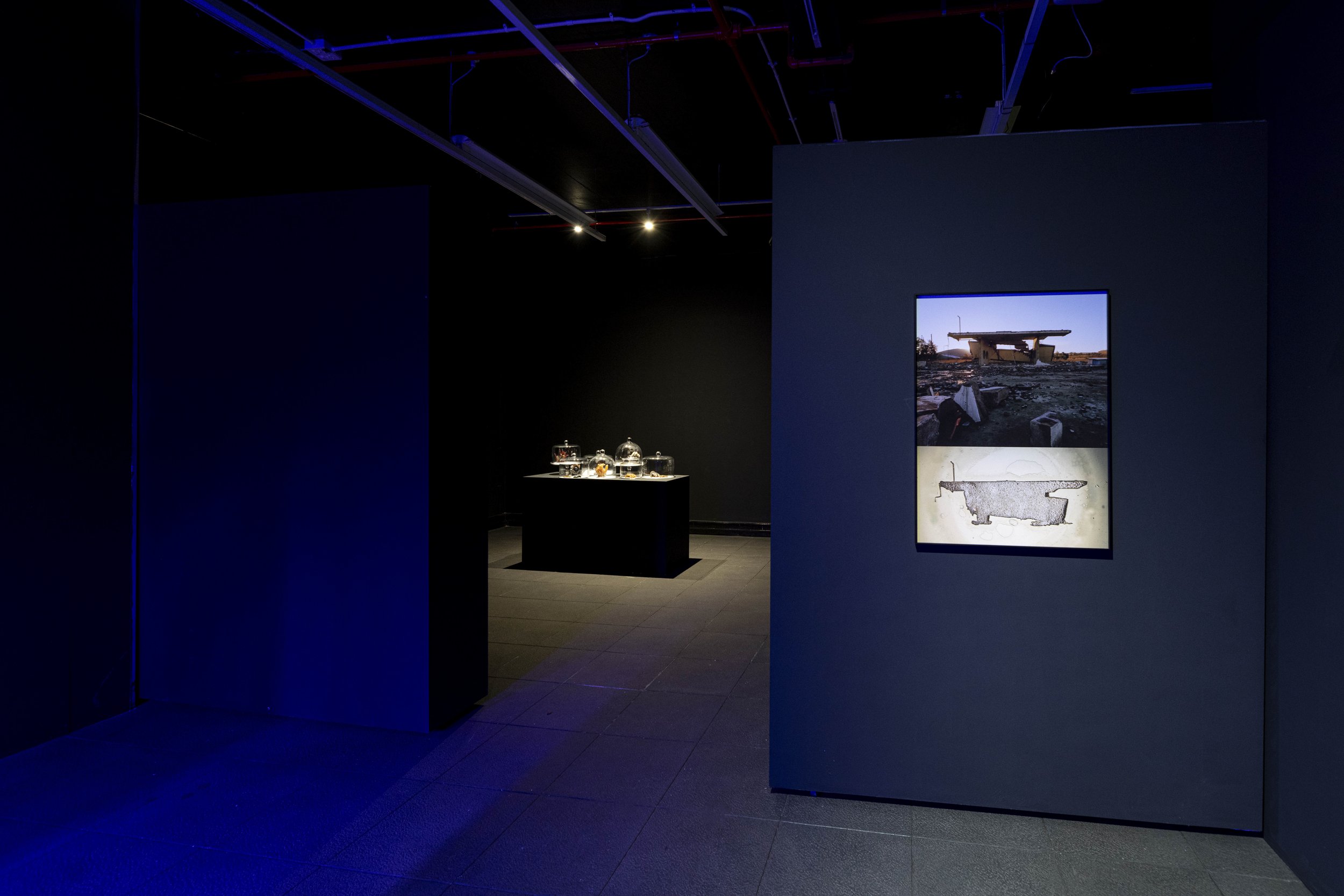
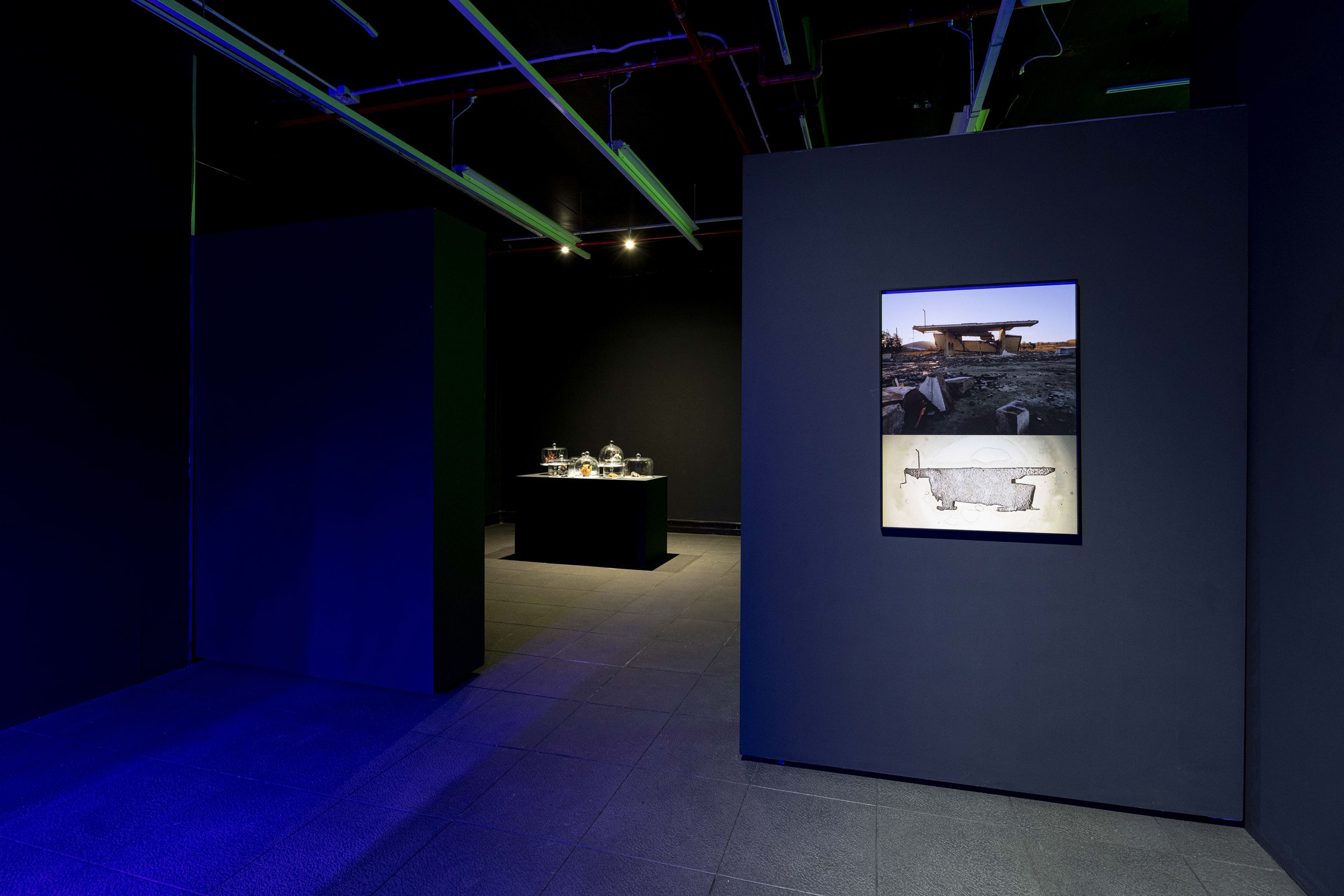
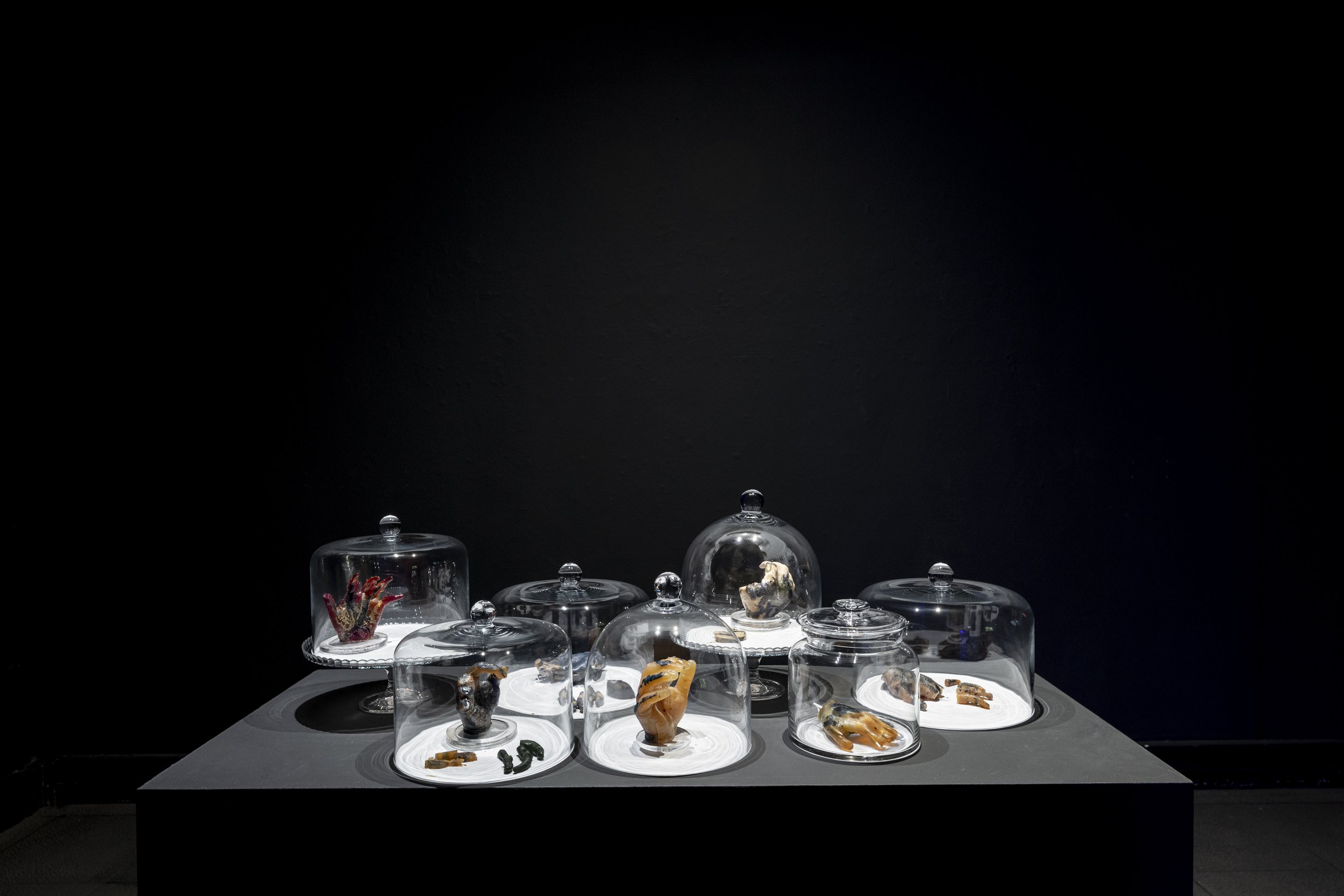

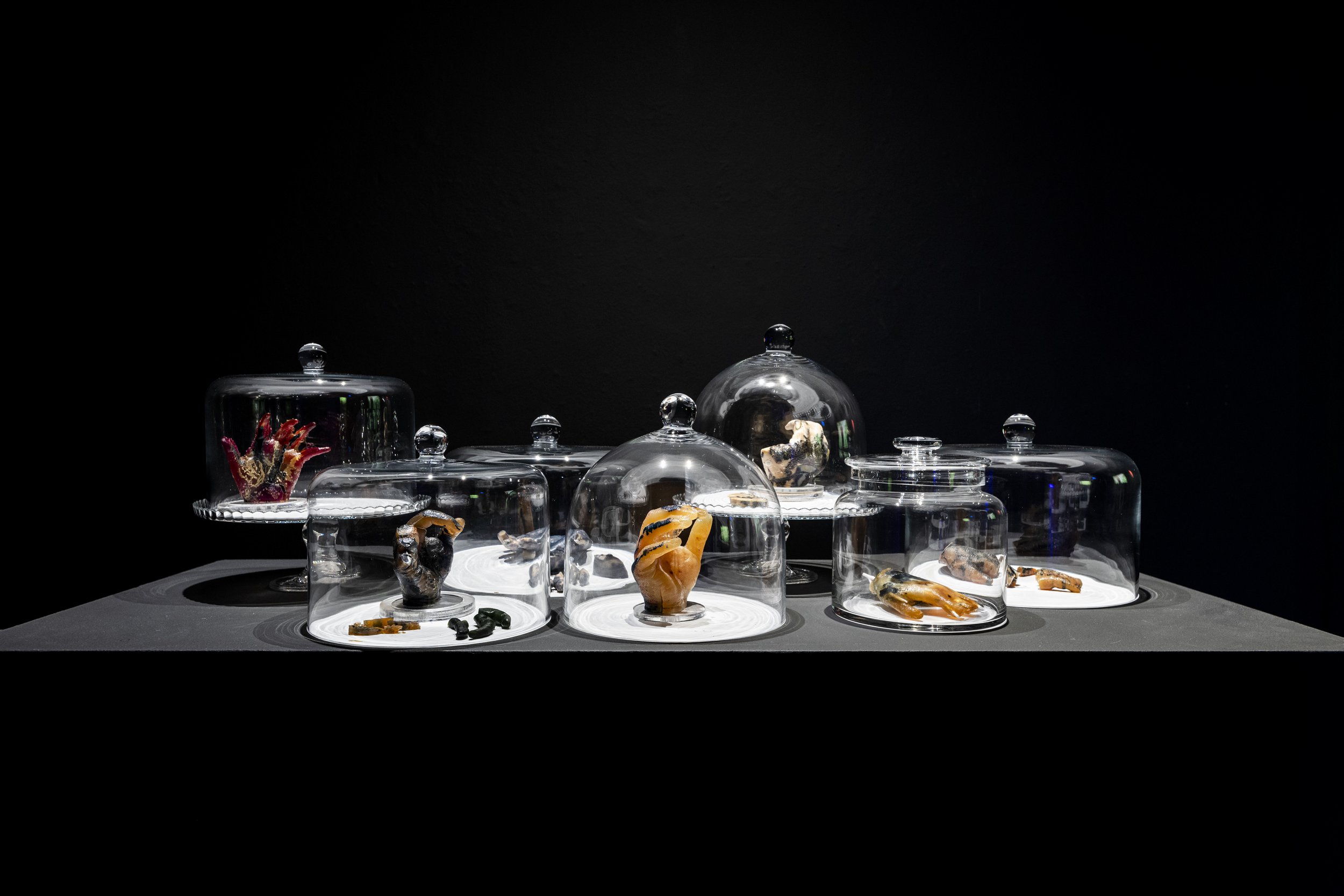
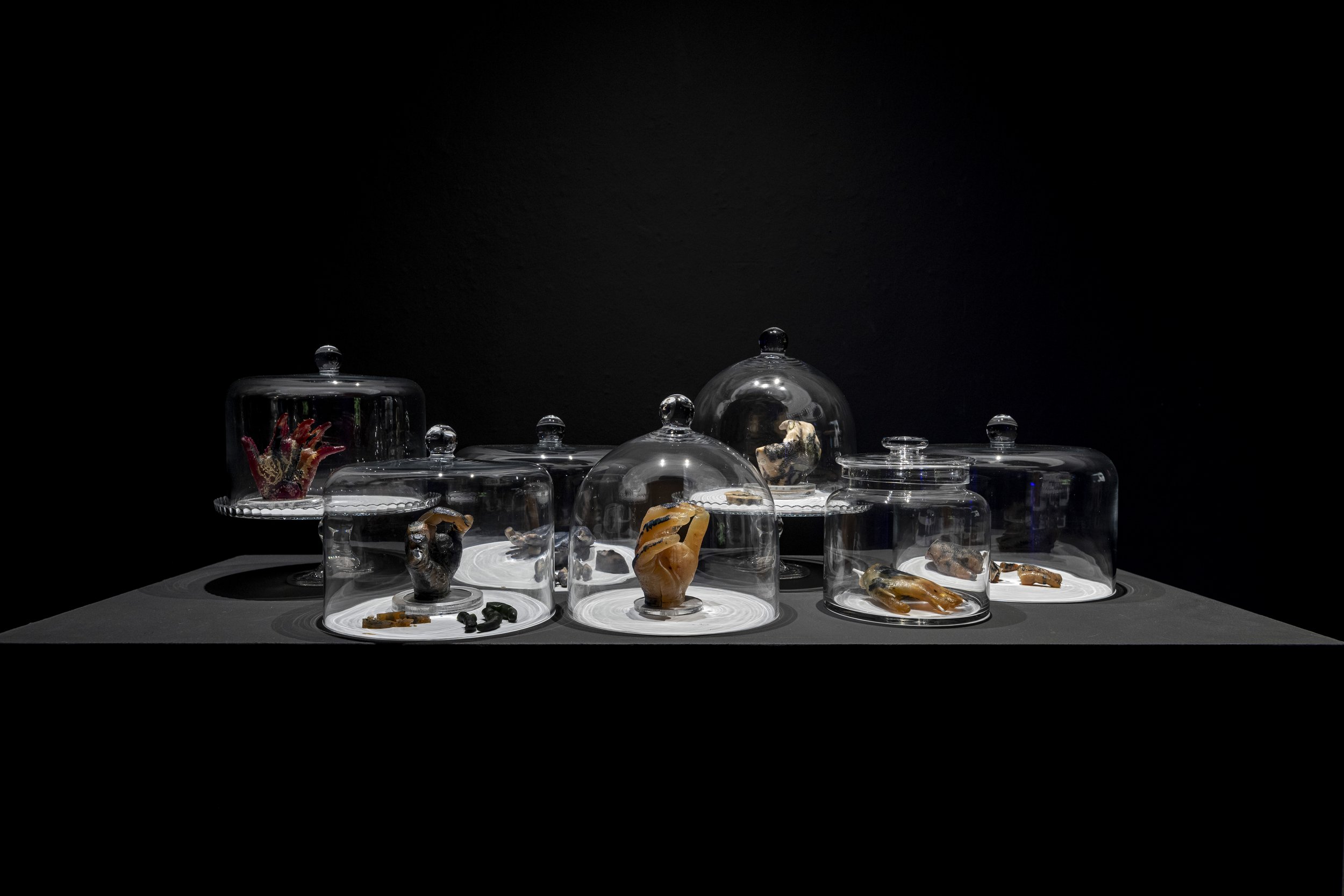

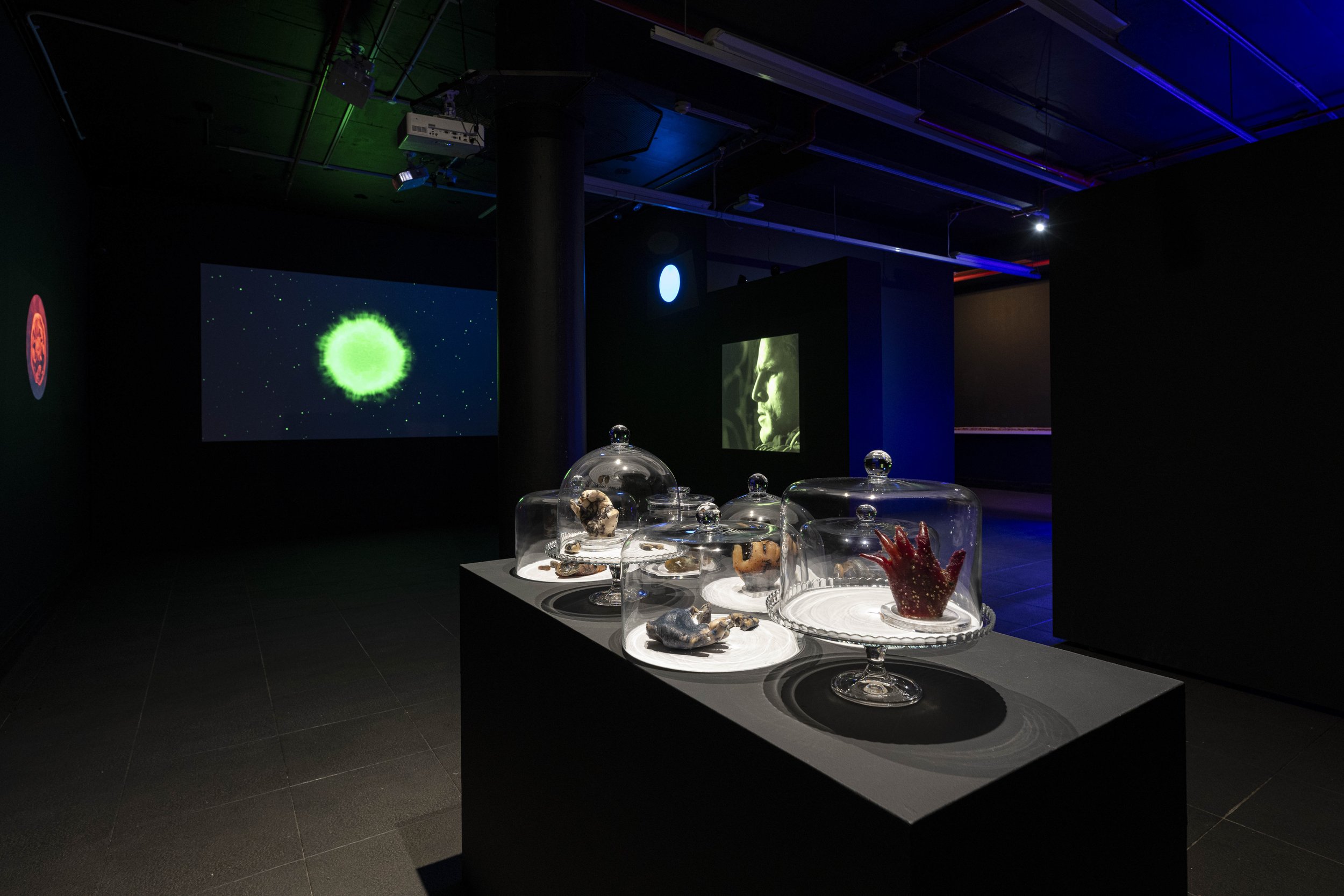
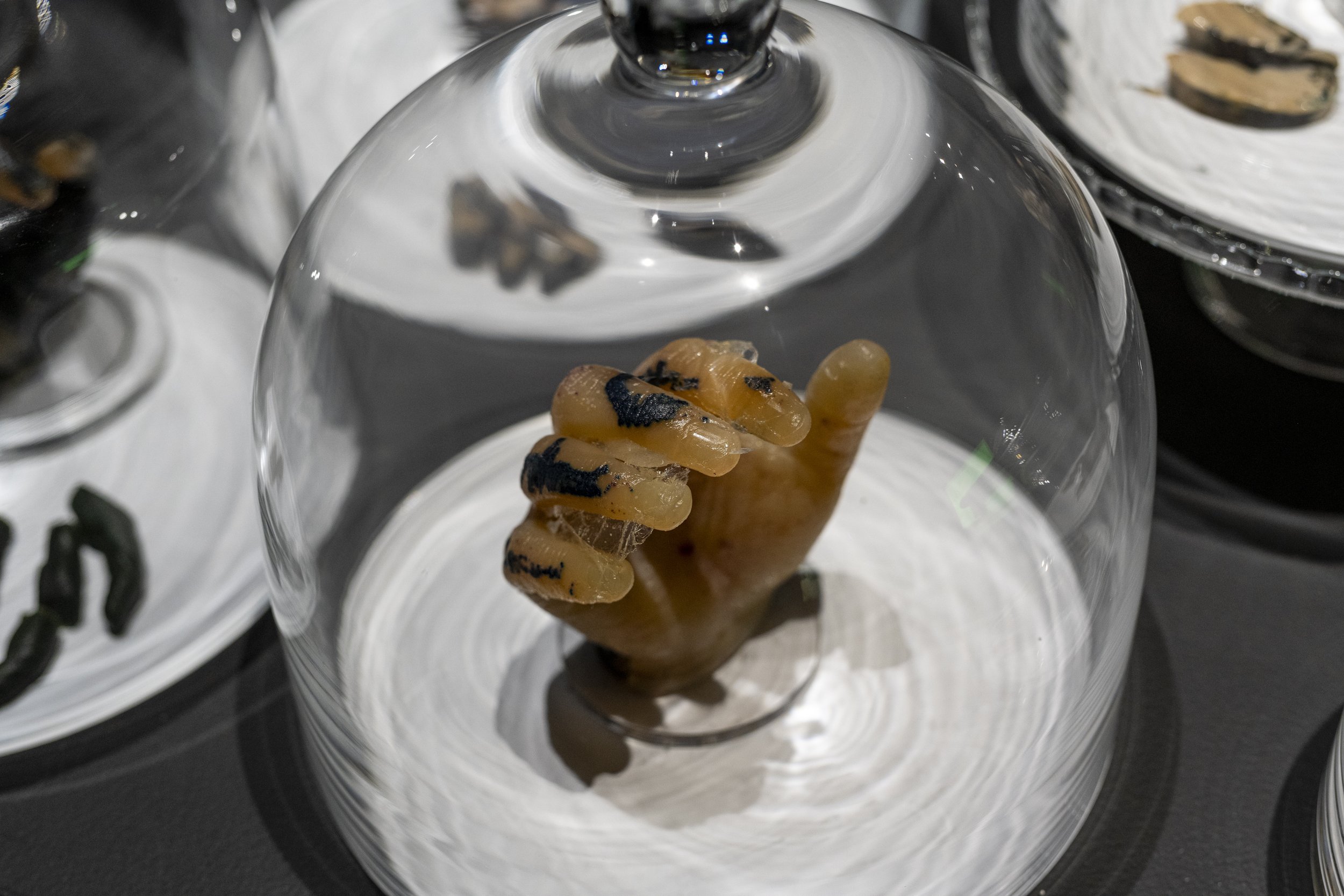
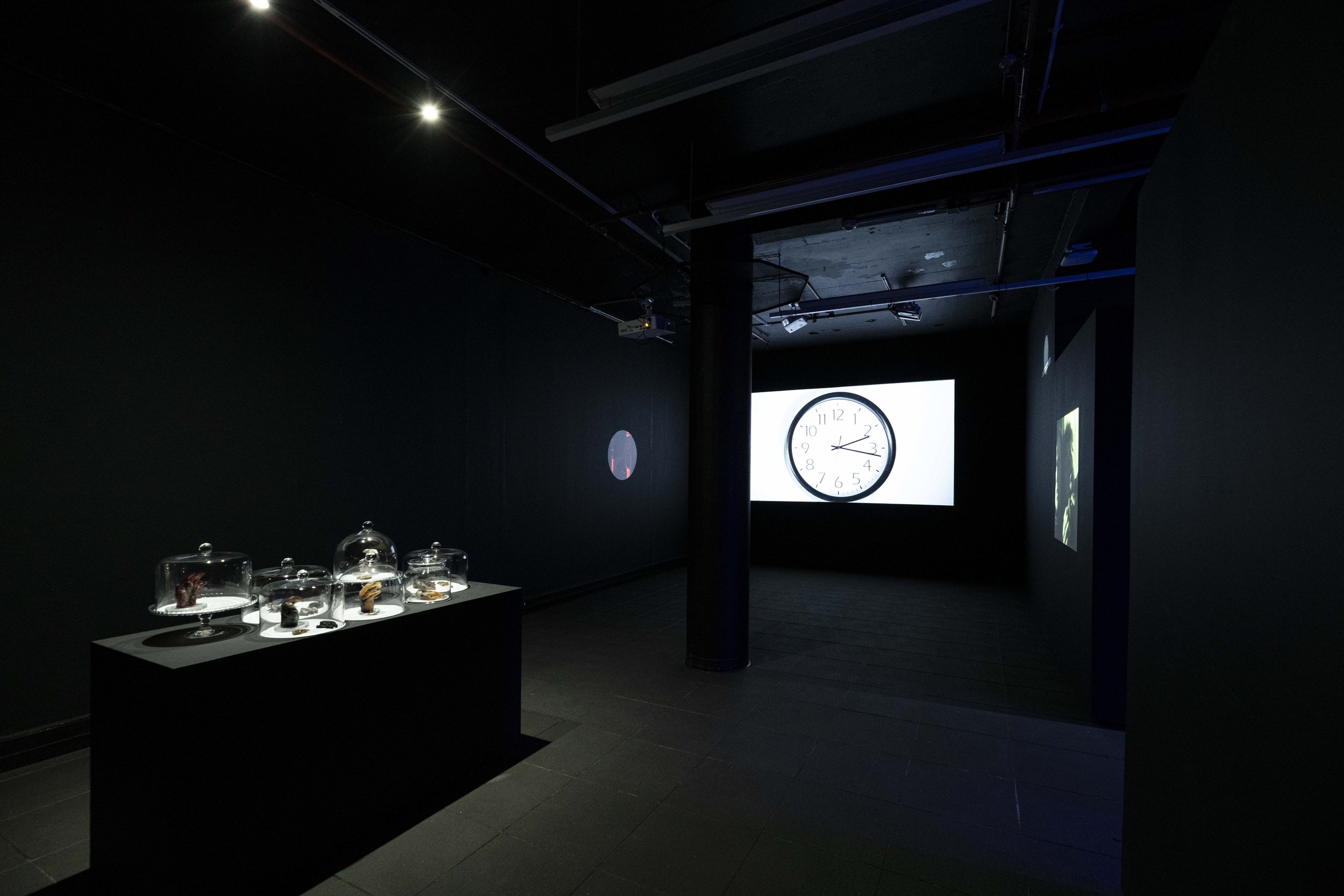
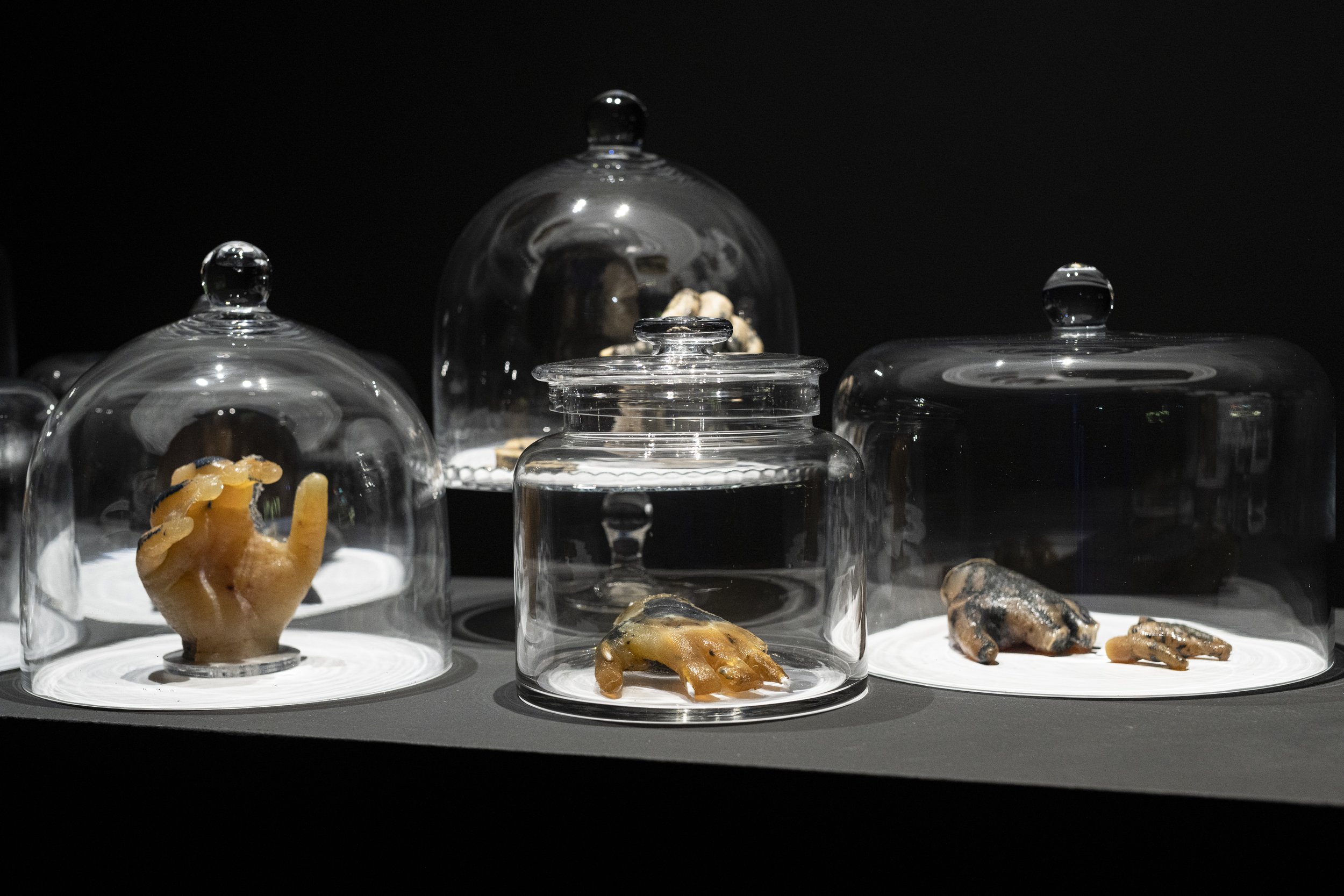
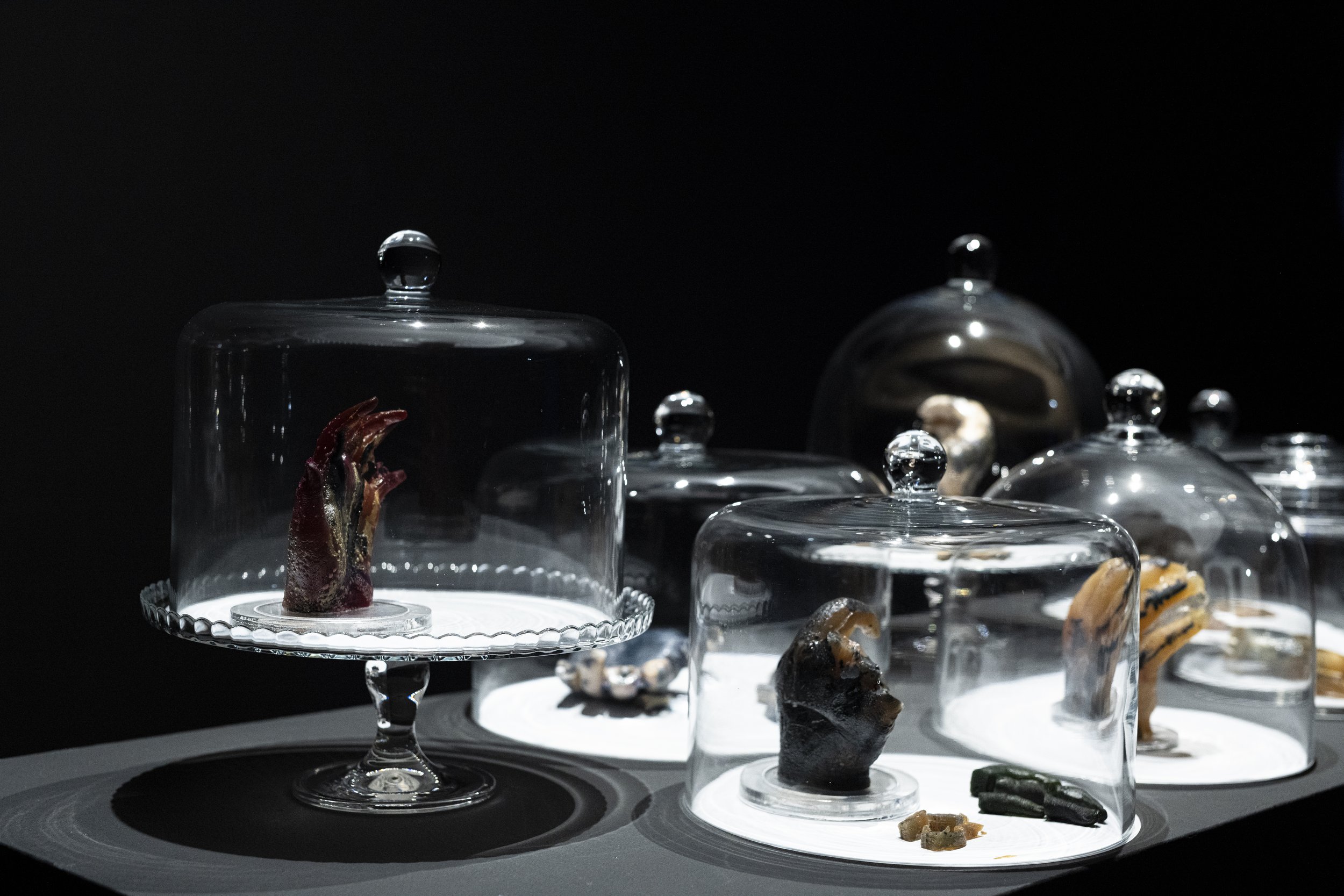
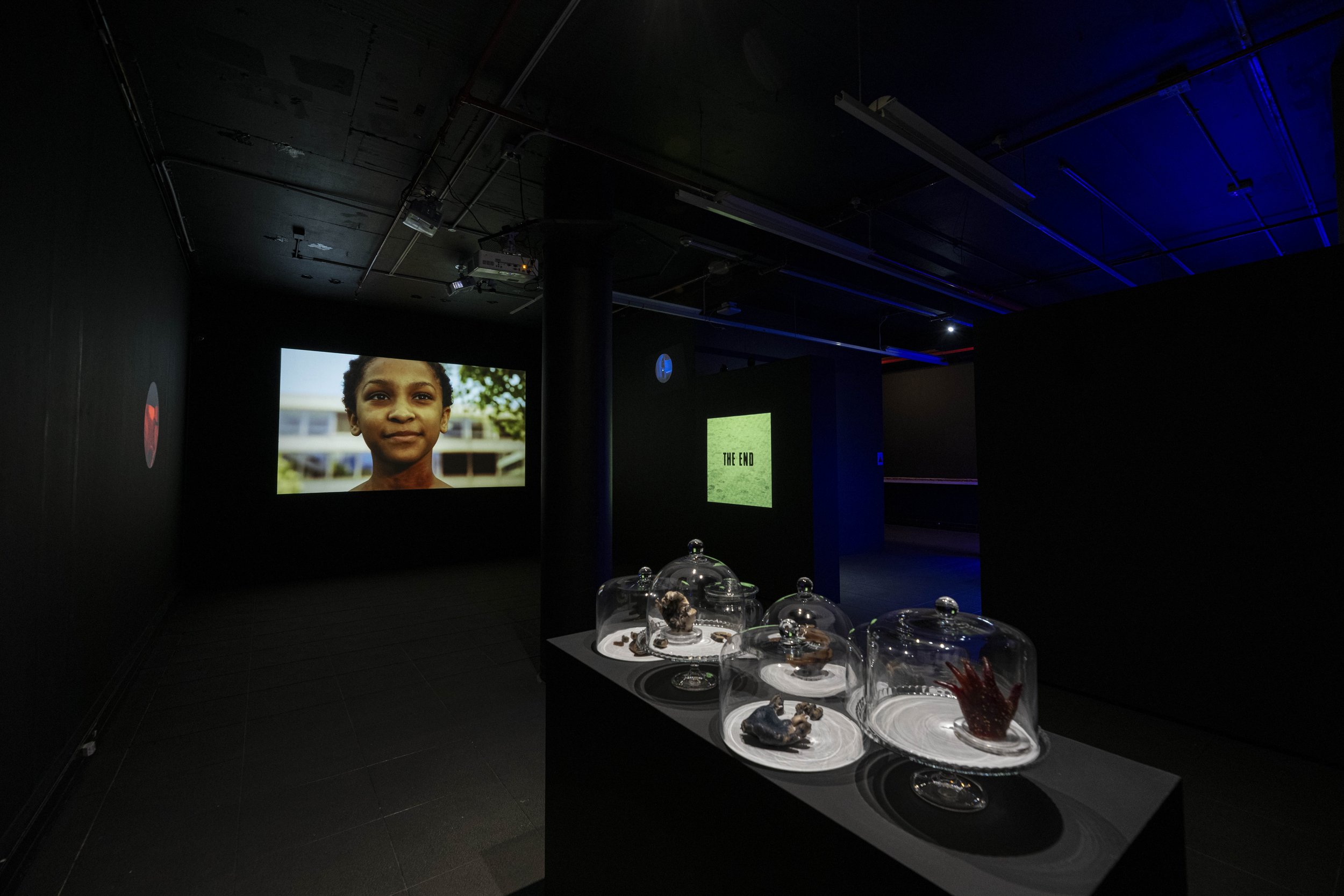
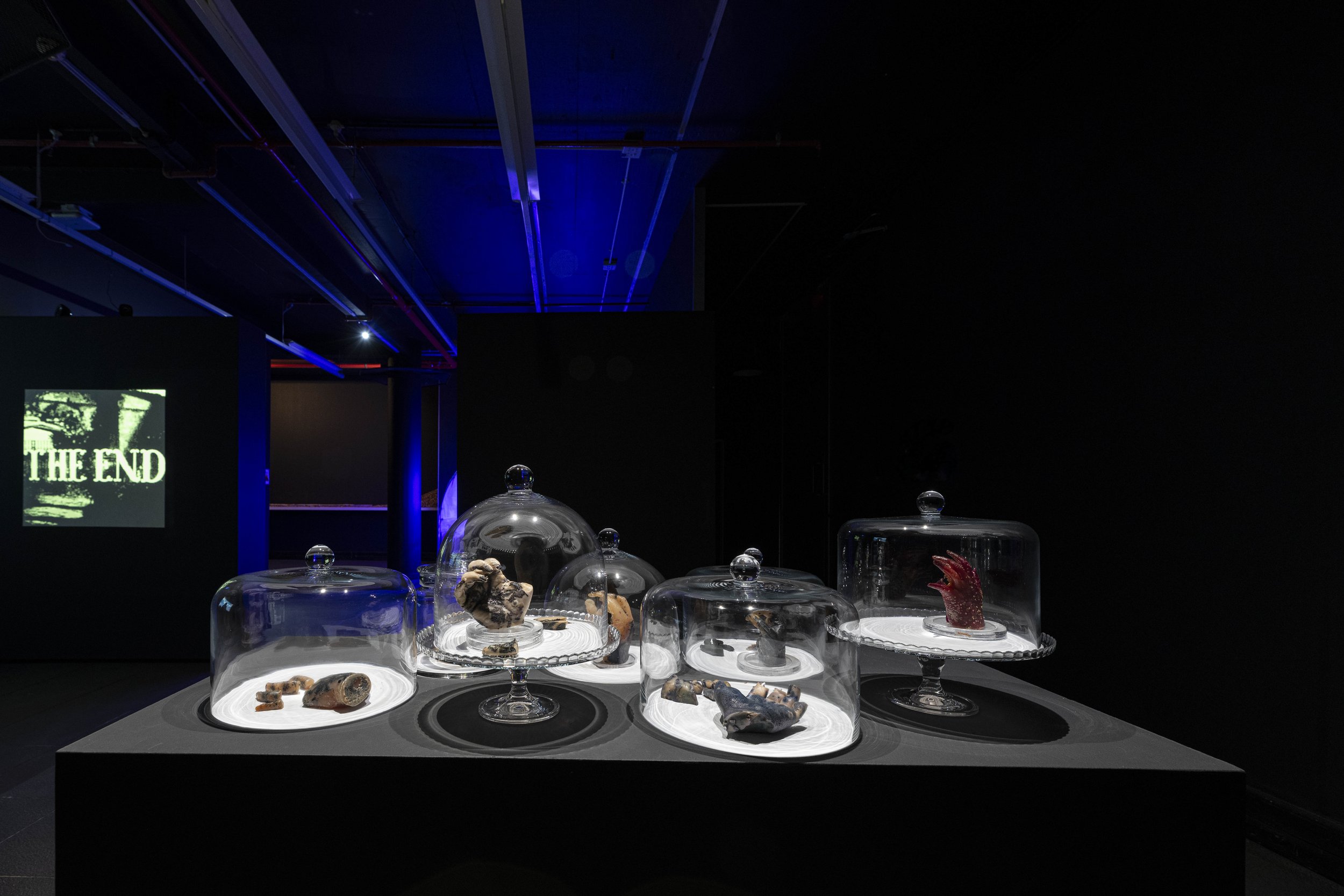
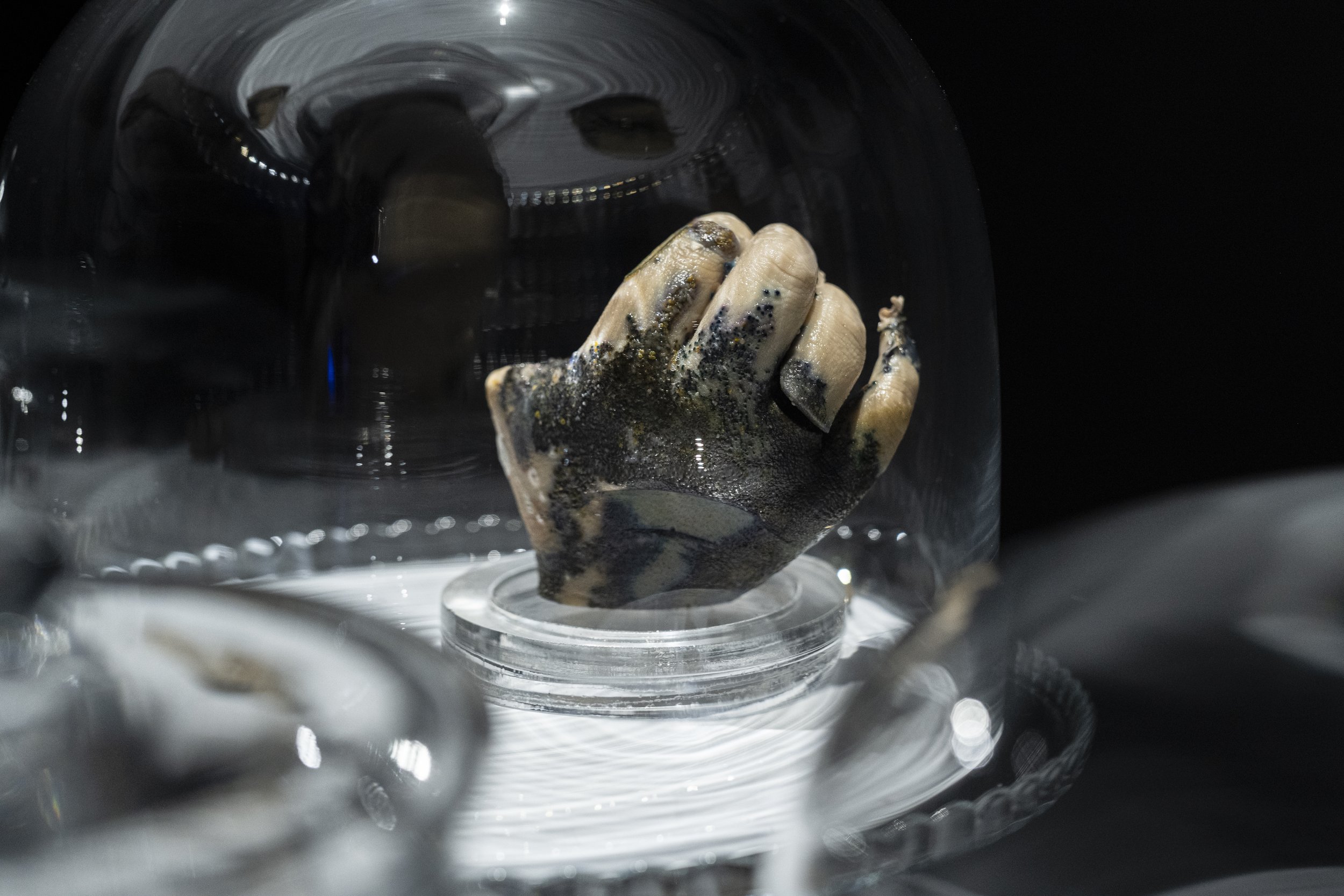
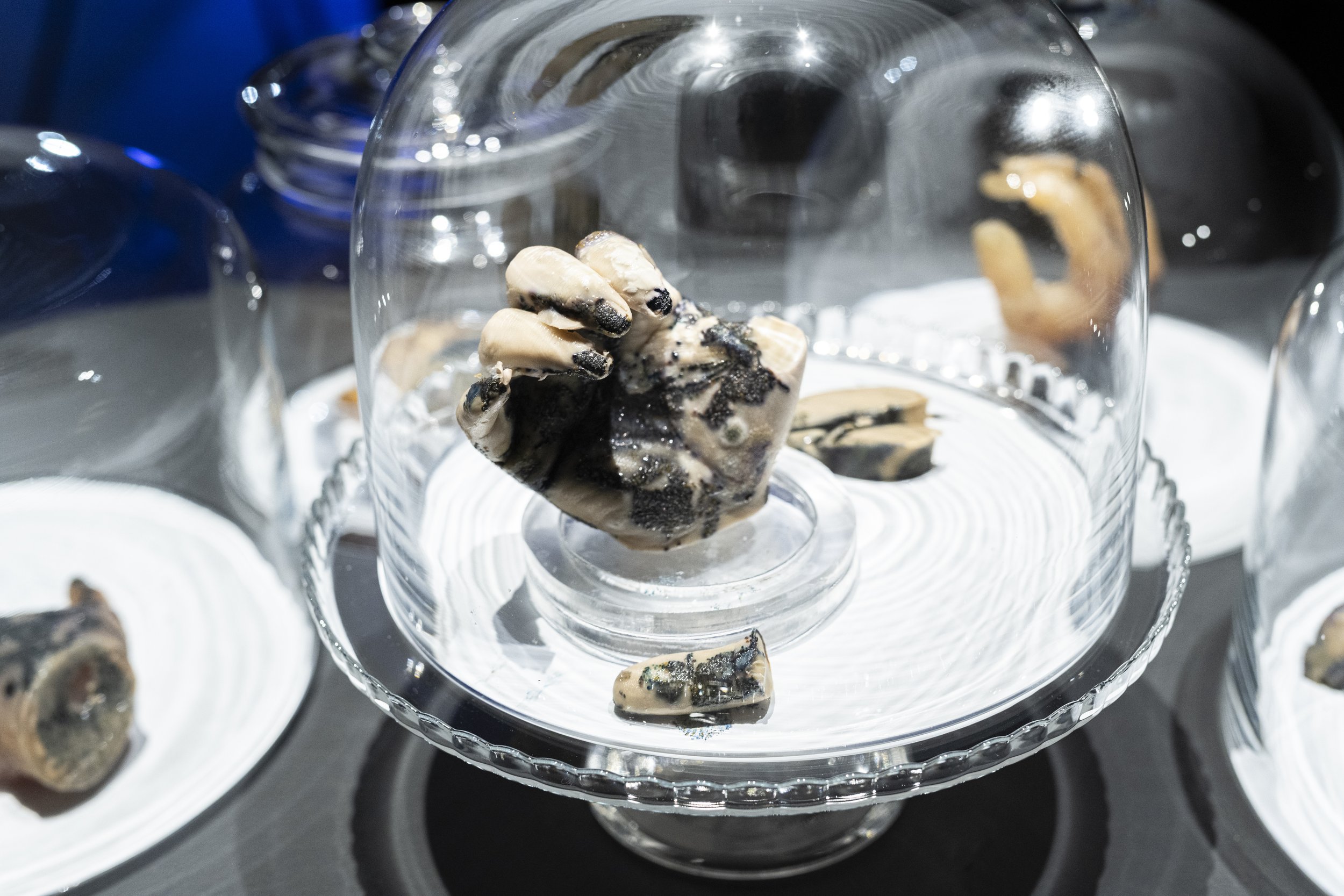
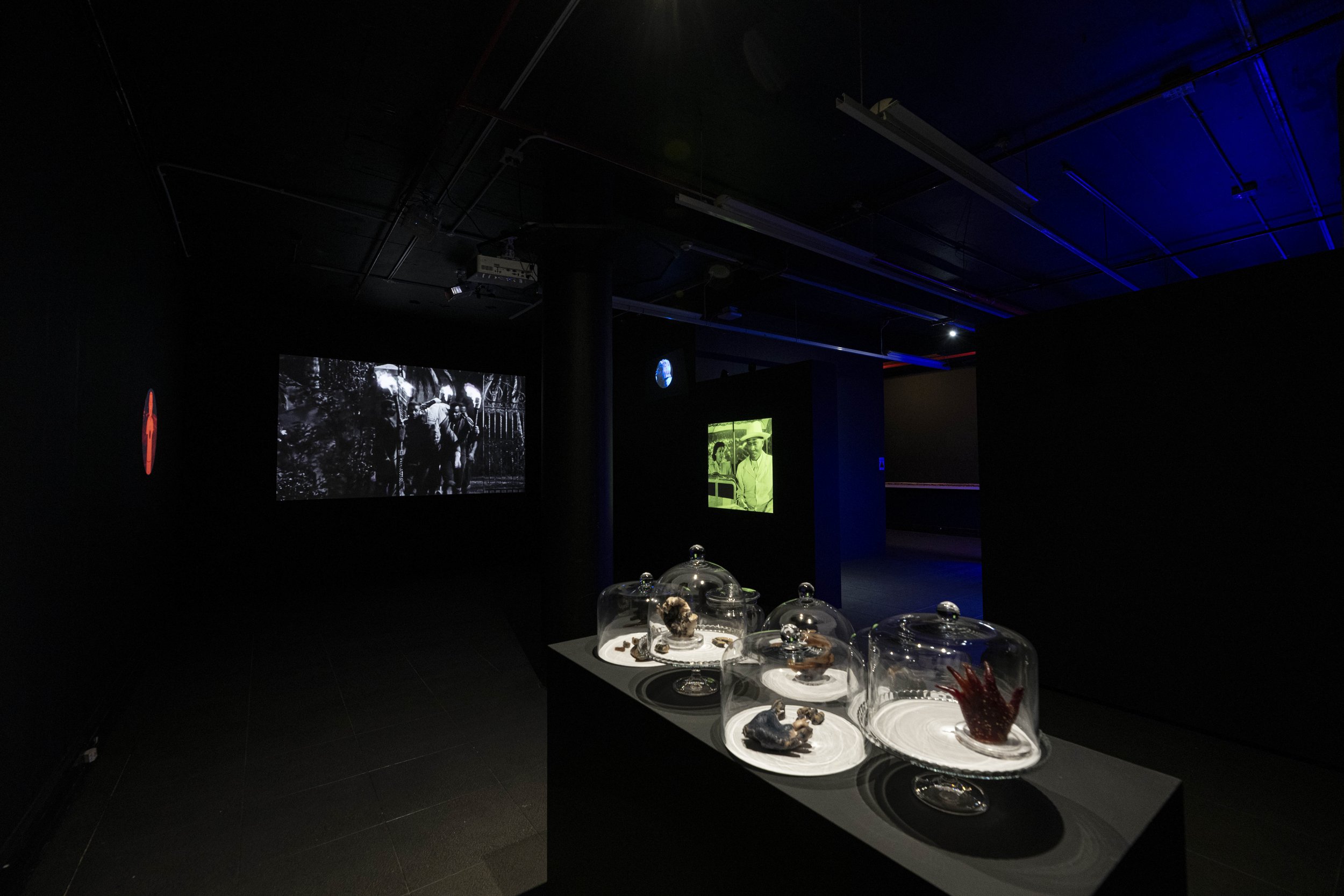
Tobias Barnard, Come dine with us (2023), Cast agar media with bacterial suspensions grown from dishcloths, hands, soil, water and surfaces; glass bell jars; Dimensions variable




